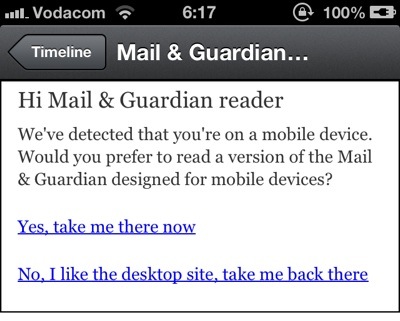Jordan Moore wrote a very level-headed post about giving users the ability to switch off the breakpoints of a responsive design to show the “desktop” site1 instead. From Claustrophobia:
This is my overriding concern — there’s no way out. There’s no way out of a bad design, an incompatible plugin, a browser bug, missing content, the endless list of potential issues someone could potentially encounter with a website whether it is responsive or not.
That’s an excellent point, and providing a “way out” echoes one of Nielsen’s 10 Heuristics for User Interface Design, written in 1995:
User control and freedom. Users often choose system functions by mistake and will need a clearly marked “emergency exit” to leave the unwanted state without having to go through an extended dialogue. Support undo and redo.
Jordan argues that giving users that control and freedom on a responsive site might feel like a cop-out, but it could be necessary:
The last thing I want is to lead users into a mass exodus from a responsive design I have put so much thought and effort into. I just think if it helps the odd user out in doing something they happen to find more comfortable in a pinch and zoom environment for whatever reason then we should probably do it rather than prevent them from doing it.
That’s a very sane, user-centered approach. It’s also worth noting that if the mass exodus does occur, it’s a clear sign that something is wrong with the responsive site. That’s valuable data.
But it all comes down to execution, of course. Users shouldn’t be asked to choose between entering the building or going straight for the emergency exit the minute they arrive at the site. It’s ok to make the exit visible, but forcing a deliberate, upfront choice between the mobile/responsive site and the desktop site puts an unnecessary burden on users.
In short, this kind of placement is ok (although the “Full Site” language is problematic):

This is not ok:

-
Whatever that means these days… ↩